Commerce redefined: how brand-operation fusion drives excellence
Sam Bettis, Customer Engagement Director at krow, explores the importance of brands getting ahead of fast-accelerating customer needs – and how they can take advantage of the creative opportunity rather than letting digital commerce become a tick-box exercise.
Discover trends that make commerce more exciting than ever and learn about krow’s digital futures programme, designed to build digital excellence that drives teams together to make something brilliant.
Bridging the gap
We’ve witnessed first-hand the seismic shifts in customer needs reshaping the digital landscape. It’s uncovered a clear disconnect between teams, and that’s what inspired us to create a customer-led programme around digital commerce.
Our digital futures programme aims to help organisations connect internally, particularly the brand and operational teams. The future of commerce calls for a unified team – one that can operate at peak performance and deliver the excellence that customers expect and deserve.
HOW TO USE THIS REPORT
We’ll dive into commerce fundamentals before discussing how technology is transforming them and the customer needs behind them.
Each section explores the core customer need and transformation driver, and covers what your organisation can do to get ahead.

Customer need: experiences are relevant to me and my world – listen to the customer to understand what you need to deliver to drive relevance
Transformation driver: option overwhelm
Outcome: map audience need
When was the last time you checked in on your customer?
In today’s world everyone is an influencer, every influencer is selling, and there are more choices than ever. However, one fifth of customers aged 16-24 admit to unfollowing social accounts due to them being unrelatable; for brands, the challenge is to create relevance by understanding our audiences and their needs.
Technology itself is further accelerating these needs, with brands and services now able to do more than ever to gain audience attention. This shift is transforming business models, creating greater ease and removing friction. To help at every step, we need to understand the end-to-end journey.
Nowadays, customers have many options at their fingertips. They can opt for a conversational bot-led experience, rely on AI-generated recommendations, engage in face-to-face services, or enjoy instant shopping experiences, among other things. So it’s more important than ever to understand the customer’s needs and craft the right thing for them, moving away from a one-size-fits-all approach.
How do customers feel?
In a world of option overload, we must prioritise really hearing our customers. As reported by PwC, 92% of customers will switch brands after two bad experiences, so it’s down to us to make customers’ voices heard.
To really listen to your customer, you need to ask yourself these questions:
- Do I understand where my customer wants to shop?
- Have I mapped out my customers’ needs throughout their lifetime?
- Do I have a robust ‘voice of the customer’ (VoC) programme?
- What processes do I have in place to share the VoC programme internally?
Techniques such as digital listening, behavioural insights and qualitative research can be used to get to know the customer, but the key to seeing change is making your insights actionable and building employee engagement around them. We believe that the customer’s voice should have a seat at every meeting and become central to every brief.
By embedding these practices, we initiate a dialogue where listening transcends mere observation, becoming a dynamic interaction that drives our brands closer to the heart of the customer’s world. This commitment to understanding and adapting to customer needs not only nurtures loyalty but also propels us towards a more personalised and meaningful digital commerce landscape.
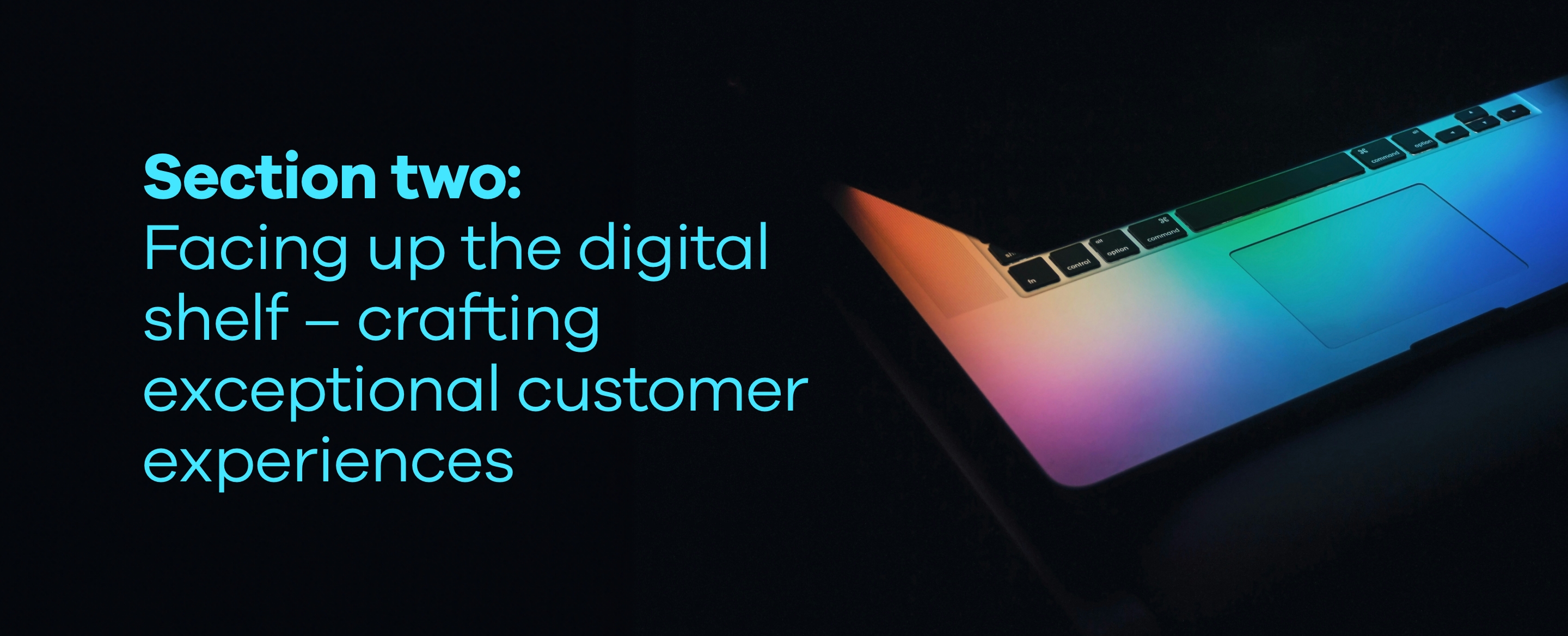
Customer need: I have all the information I need before purchasing
Transformation driver: trust fatigue
Outcome: better guidelines
The digital counterpart to the physical shelf, the digital shelf has to work even harder – given the customer can’t pick up and touch the product, they can’t see others standing around it and they can’t ask a member of the shop floor staff to help. Despite this, customer preference is still to buy online, so it’s down to us to create an experience that’s second to none and leaves no questions unanswered.
Over half of customers will abandon baskets based on poor digital shelf experience (Bazaarvoice), so it’s important to consider not only what we say on the shelf but also where we show up.
Diverse shop types and experiences
- Me.com/direct to customer: an owned channel where you can create your own shopping proposition but may have to fight for customer traffic
- Quickcom: instant shopping experience, e.g. Deliveroo – where you can capitalise on a customer’s desire to have a product instantly
- Marketplaces: places that host a range of sellers and offer a service-based proposition (e.g. delivery), such as Amazon
- Verticals: marketplaces for specific product types, e.g. B&Q marketplace, Airbnb –where we can capitalise on a focused mindset
- Bricks and clicks: stores that blend an online and offline experience to capitalise on preference – e.g. Tesco
- Social shops: platforms that rely on algorithm-led content and user-generated content, such as TikTok.
The digital shelf feels very different on each platform, but the core fundamentals of what customers want remain the same.
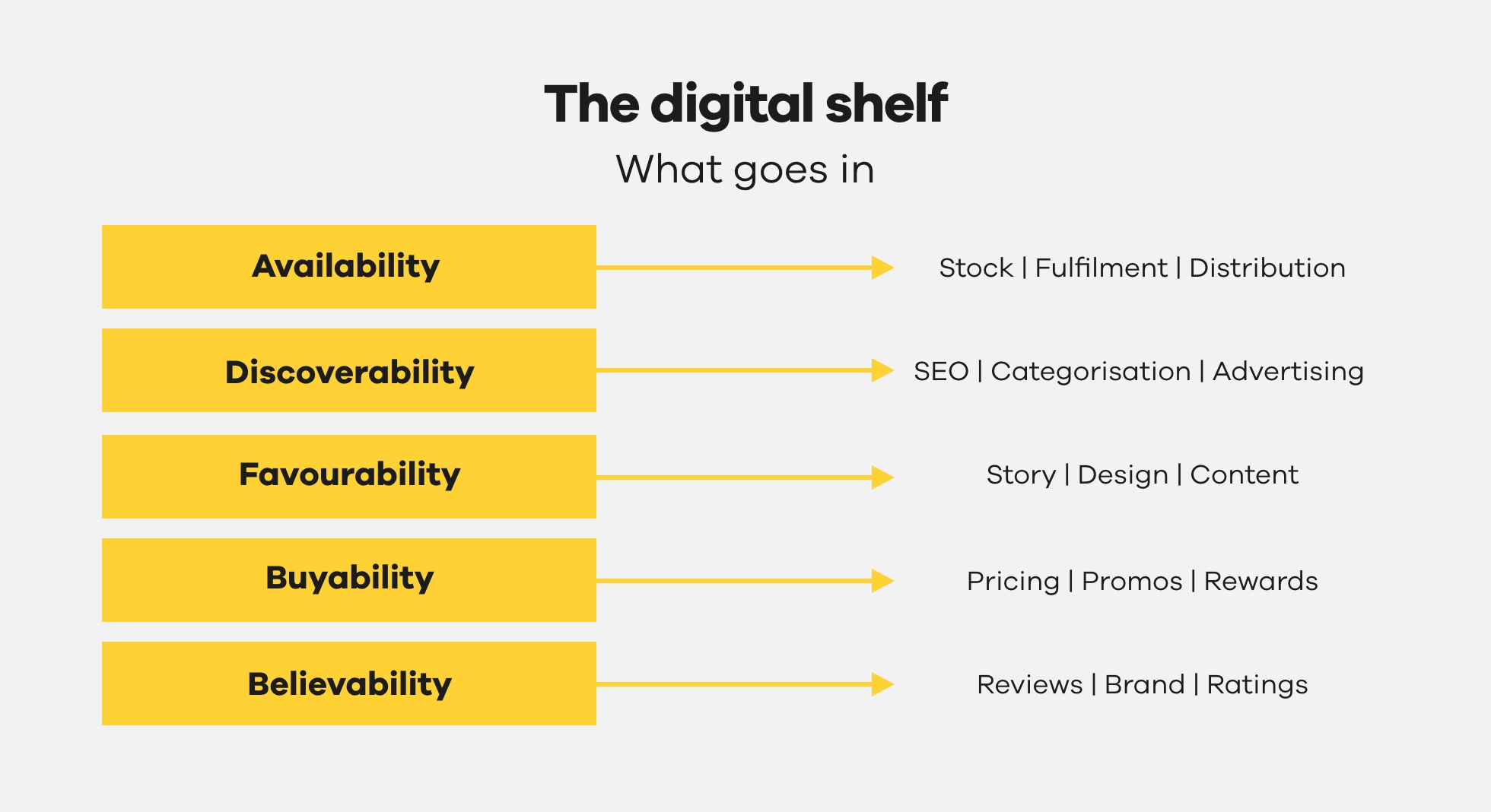

Achieving great thinking
What’s often forgotten is the enormous amount of creative opportunity the digital shelf can unlock to help brands really connect. For example, Screwfix is strengthening customer connection through the use of Deliveroo, tapping into audience needs for convenience. Meanwhile, Nourished is revolutionising its shopping experience based on human needs rather than product names.
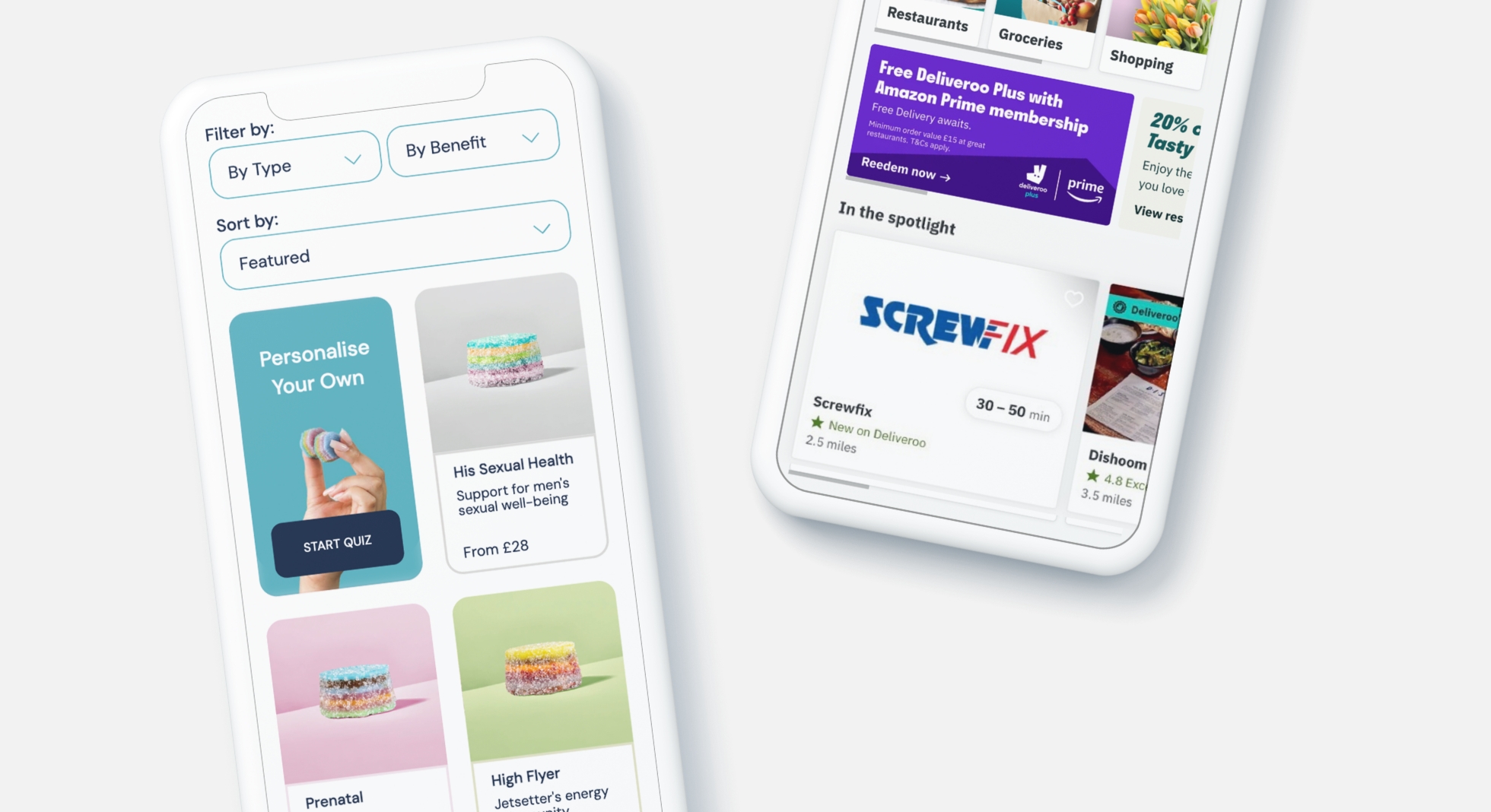

Where should we start?
To begin exploring how to kickstart and optimise your digital shelf, you will need to consider:
- Do you have a regular process for auditing the digital shelf?
- How do you monitor and ensure your digital shelf is up to date?
- Do you have technology to assist with digital shelf management?
- Who are the key stakeholders for the digital shelf?
It’s more than a platform for products
The digital shelf is a dynamic space for brands to engage, inform and connect with their customers. By embracing transparency, personalisation and creativity, brands can overcome the challenges of the digital marketplace and turn potential obstacles into opportunities for growth and customer loyalty. Let’s not just fill the digital shelf, let’s enrich it – making every click count towards a lasting customer relationship.
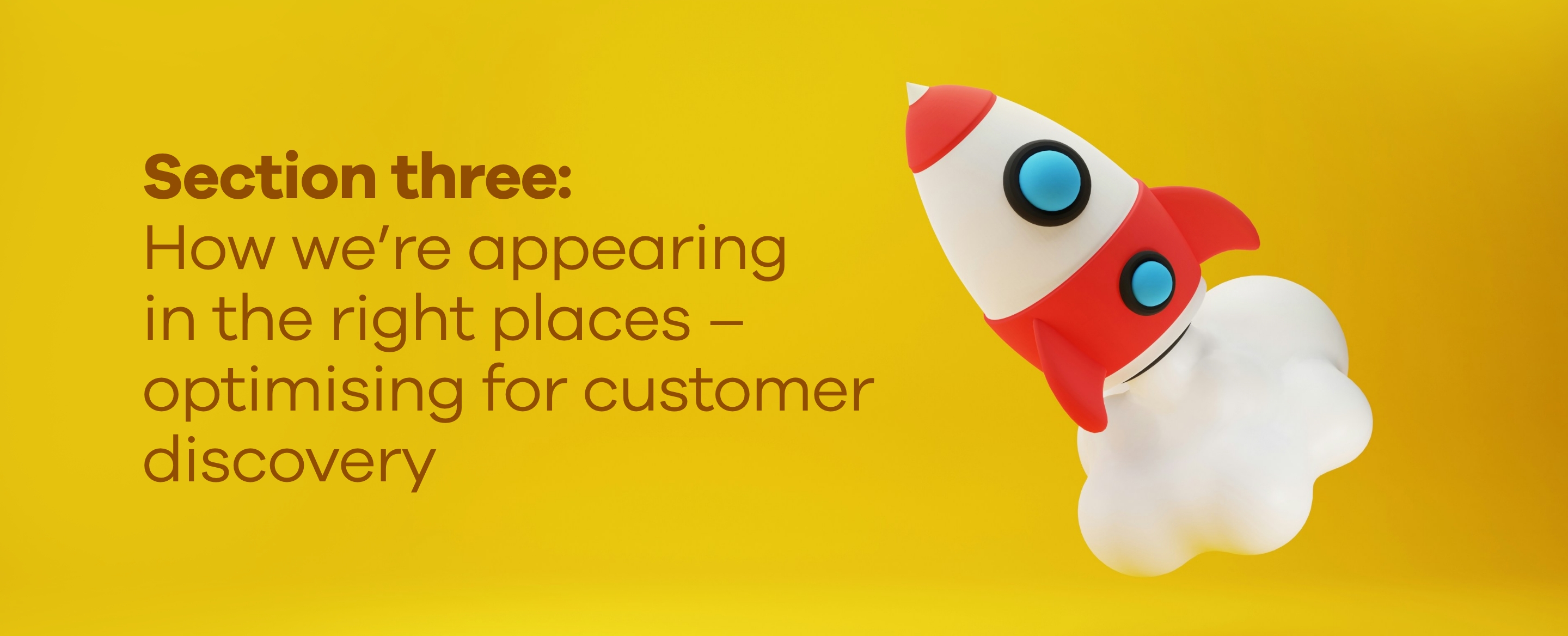
Customer need: you show up where I need you to make purchasing easier
Transformation driver: fragmentation of experiences
Outcome: discovery optimisation
What’s experience fragmentation?
It’s all about challenging brands to plan in consumer-first ways and adhere to new sets of rules for discovery optimisation. We should move beyond a one-size-fits-all approach to channels and marketing. Fragmentation challenges include:
- Increased competition: a surge in brand presence heightens the battle for share of voice (SoV), potentially escalating marketing expenditures
- Diverse channels and behaviours: the shift towards preference-led shopping demands versatility in approach
- Personalised customer experiences: it is imperative to demonstrate intimate customer understanding through tailored experiences.
The levels of competitiveness are challenging some brands to take more considered approaches to customer experience design. Instead of going big, they’re going thoughtful. It’s important that brands really understand where their customers are most active, where they’re spending most meaningfully, the questions they’re asking and the value points they’re seeking.
Customers with higher lifetime value may be shopping in specialist retailers. They may be searching more specifically, and different targeting options altogether may apply. Initiatives you may want to think about include:
- A review of search strategy: reviewing not just Google search, but how shoppers are searching on TikTok, retailers and app stores
- Optimisation of paid media strategy and improving targeting criteria.
Here are some things to consider
- When was the last time I evaluated and updated my search strategy?
- How well do I grasp shoppers’ preferences and their evolution over time?
- Am I attuned to the nuances of seasonal shopping trends?
- Is my targeting strategy reflective of the latest consumer behaviours and preferences?
To move forward you could consider how to better leverage targeting, monitoring customer preferences, and how to continue to adapt. The future of being in the right places is about how we adapt and how we truly show our understanding.
CASE STUDY:
YVES SAINT LAURENT BEAUTY BROKE FREE FROM THE CROWD THIS MOTHER’S DAY
Yves Saint Laurent recently successfully tested their first full-funnel campaign for L’Oréal’s beauty brands. Assuming a consumer-first strategy, YSL Beauty took to beauty shoppers on Pinterest. Understanding that Mother’s Day is big on Pinterest, they launched following Pinterest’s best practices – keeping a clear CTA and videos under 10 seconds.


What were the results?
By combining conversion, consideration and awareness campaigns, YSL Beauty reached 84% of their target audience and enjoyed a 23% lift in eCommerce sales.

Customer need: you make things easier
Transformation driver: the rise of conversational commerce
Outcome: care strategy
Making purchasing easier is one thing, but to really win at commerce we need to be prepared to care, and show this to our customers. Audiences want the humanity of talking to a shop assistant/expert, with the ease that digital has made an expectation. It’s no secret that customers who are supported are more likely to stick around, with over 90% of consumers stating that a positive customer service experience increases the likelihood of buying again (Salesforce).
Why care should be core to commerce
We are entering the age of ‘chatty commerce’, a game-changer in how customers and businesses interact. This isn’t about throwing out chatbots for the sake of it or adding another channel to the customer service mix. It’s about leveraging technology to enrich conversations and make every interaction feel as natural and engaging as talking to a human – guiding people down the best path.
We believe that brands should work towards a care strategy that transforms traditional customer service from problem-solving to value-enhancing.
Consider the following processes
- Keep listening: understand how you can help and continuously improve services by baking real customer needs into your care strategy
- Anticipate needs: utilise data from these conversations to predict and proactively solve problems, making every customer feel seen and valued
- Simplify processes: review every touchpoint in the customer journey through the lens of simplifying. Can something be made easier? Then we need to innovate
- Educate proactively: use every interaction as an opportunity to educate customers about how to get the most out of your services or products, enhancing their overall experience
- Ensure accessibility: make sure your conversational commerce tools are accessible to everyone, breaking down barriers and opening up lines of communication to all.
From here, we can clearly define how customer care not only enhances experience but builds brand love.
CASE STUDY:
IKEA ENROLS AI BOT TO BOOST INTERIOR DESIGN OFFERING
In an effort to keep up with customers’ evolving needs, IKEA call centre employees are receiving training to become interior design advisors. In place of the call centre employees, Billie, the AI bot, receives all routine customer enquiries and has effectively managed 47% of customer queries over the past two years.
Following successful launches across Europe, UK and US customers can experience interior design advice for just £25.


Here are some things to consider
- How can we make our conversational tools more intuitive and human-like?
- Are we truly listening to and learning from our customer interactions?
- In what ways can we further simplify our customer’s journey?
- How can we ensure our care strategy is inclusive and accessible to all?
- Is our care team integrated with other departments?
As we enhance our care proposition and process, it’s key to remember that at the heart of every technological advancement, chatbot and customer interaction, there’s a person seeking simplicity and just wanting to get something done. Our care strategy isn’t just about reducing queries – it’s about nurturing connections, making life easier and ensuring that every customer feels heard. We believe this is the future of caring in commerce.

Customer need: you are relevant to the shopper
Transformation driver: navigating cookie-free experiences
Outcome: test and learn
As cookies disappear, the digital footprints we used to follow to craft experiences are fading. But staying relevant to our customers is key to connecting and choosing the right audience. While it’s a big challenge to navigate, there’s also an opportunity to create better experiences, test more and show audiences we really care. To do this, we need to measure better and really understand the target audience.
The death of third-party cookies from our toolkit forces us to rethink our approach to understanding and engaging with our audiences. It’s tricky, but it challenges us to think more, be respectful of privacy and find ways to build better experiences.
Optimisation now means more than adjusting ad placements or email frequencies; it’s about a real culture of test-and-learn that is at the heart of digital strategy. To start thinking about it you should explore:
- Leaning into first-party data: consider the value exchange and reason to join your data ‘club’, and craft a first-party approach
- Personalisation to connect: not just a first name in a subject line – think about how you can use personalisation to create better experiences and measure and model around this
- Agile content creation: adopt an agile approach to content, ready to pivot based on real-time feedback and engagement metrics. Today’s meme can be tomorrow’s old news, and our content strategy needs to keep up
- Better testing strategies: from A/B testing on email subject lines to split testing landing pages, we should be creating our own guardrails around what works
- Feedback loops: create and maintain feedback loops that turn customer interactions into actionable insights. Ask customers what they want to see more of.
CASE STUDY:
JUST EAT SERVES UP THE RIGHT CONTENT USING FIRST-PARTY DATA
Just Eat was able to reach the right customers at the right time using first-party data. It created a three-step process involving the development of a clear first-party data strategy, before figuring out what’s relevant to the consumer and where they are.
Understanding a customer’s food preferences, order frequency and location is essential first-party data that enables them to offer the right thing, at the right time, in the right place.


Here are some things to consider
- How can we better leverage first-party data to understand customer needs?
- Are we truly personalising experiences, or are we just segmenting communications?
- Do our content and offerings evolve based on customer feedback and engagement data?
- How effective are our testing strategies in revealing what resonates with our audiences?
Navigating the post-cookie era may not be easy, but it’s an invitation to innovate, respect our customers’ privacy and engage with them on a more personal and meaningful level.
By testing and learning better, we’re learning from every hit-and-miss. This approach not only makes us more relevant, but also more resilient and connected – and creates better commerce experiences!

Customer need: you get my needs
Transformation driver: the power of narrative in commerce
Outcome: personalisation and brilliant content
Finally, we need to focus on the importance of the ability to craft and share stories that not only connect but also elevate the brand’s narrative to drive digital commerce brilliance. In crowded marketplaces, we know that every click should start or open up a story – and we need to compel it to be memorable. Social selling shows us what this will start to look like, with people showcasing why a product fits into your life. This will require eCommerce teams and brand teams to really connect and work together.
Stories have always been key to connection; how we show values, unlock emotions and inspire action. In digital commerce, we can use stories to show why a product fits the shopper’s lifestyle.
Personalisation and content are key to making stories that actually connect. We must use the insights gathered from our optimisation efforts to understand how we can truly connect with the fragmented customer.
Improving your customer connection
- Data-driven storytelling: use our customer data and a customer data platform to take audiences on a journey based on their unique experiences with a brand to improve product usage and relevance
- Authenticity in stories: where there’s information overload, we need to focus on authenticity – consider how we can crowd-source real customer experiences to bring an authentic edge and frame everything around our values
- Engaging formats: explore new formats that fit into customer lifestyles, e.g. podcasts, games, long-form content.
Creating deeper connections
The 37-year-old Mattress Firm is relying on original content such as podcasts to boost brand awareness and drive sales. The brand is successfully positioning themselves as an expert on sleep and their ‘Chasing Sleep’ podcast has proven popular, alongside a detailed new ad campaign and research report. The always-on strategy and ability to connect with customers on a deeper level is successfully driving more traffic.
Here are some things to consider
- How well do we really know our customers and what they are into? Can we use this to make relevant stories?
- Do we have a framework for aligning stories to brand values?
- What new content formats can we explore to bring our brand’s story to life in innovative ways?
- How can we transform our customers from passive listeners to active participants in our brand’s narrative?
Central to every experience is customers who are open to connecting, which could enhance our commerce experience. Using personalised storytelling, we build experiences and bring our brand to life.
CONCLUSION:
UNDERSTANDING YOUR CUSTOMER IS KEY TO SUCCESSFUL COMMERCE
In today’s dynamic digital landscape, success in commerce hinges on our ability to listen, adapt and connect with our customers. As explored, there are six main ways to do this. But whether you’re tuning into customer needs, optimising digital experiences, caring about their shopping journey, trying to stay relevant or crafting compelling stories, businesses can successfully curate meaningful connections to drive commerce forward.
Considering yourself and your customer
At the end of each section there are some points to reflect on, and they’re designed to help your organisation navigate each vital customer need. But if you’d like to learn more about how you fit across all areas, we strongly recommend taking the quiz below.

About the author
Sam has spent her career delivering meaningful digital experiences across social, web and content, applying skills in digital and social strategy, paid strategy, content planning and SEO. Sam gives focus to mining digital channels for behavioural and attitudinal signals to help shape the best experiences. Sam has worked on a wide range of brands in the strategic, activation and insight space, including Barclays, FRONTLINE, Sky, Morrisons and Vegetarian Express.
If you’d like to find out more, please email sam.bettis@krowgroup.com.
QUIZ:
YOUR BRAND’S DIGITAL COMMERCE APTITUDE
These questions are for fact-finding purposes, and all require simple yes-or-no answers.
LISTENING
Listening is the foundation of how we wow the customer, by showing that we really know them
Products: needs-based profiles, digital experience map, research
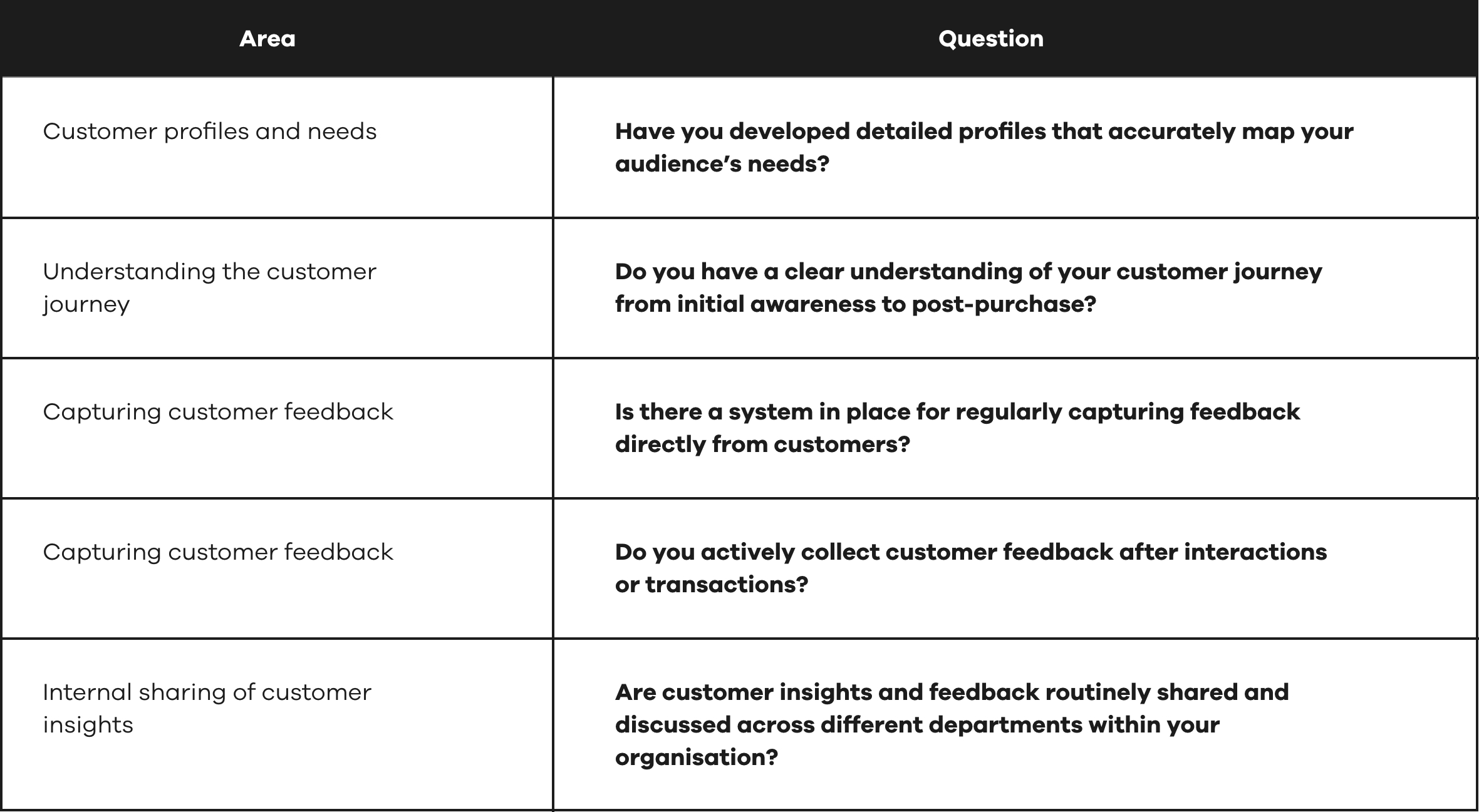

FACING
Facing the digital shelf is key to customers finding us interesting and choosing us
Products: Digital audits, UX review, digital shelf toolkits
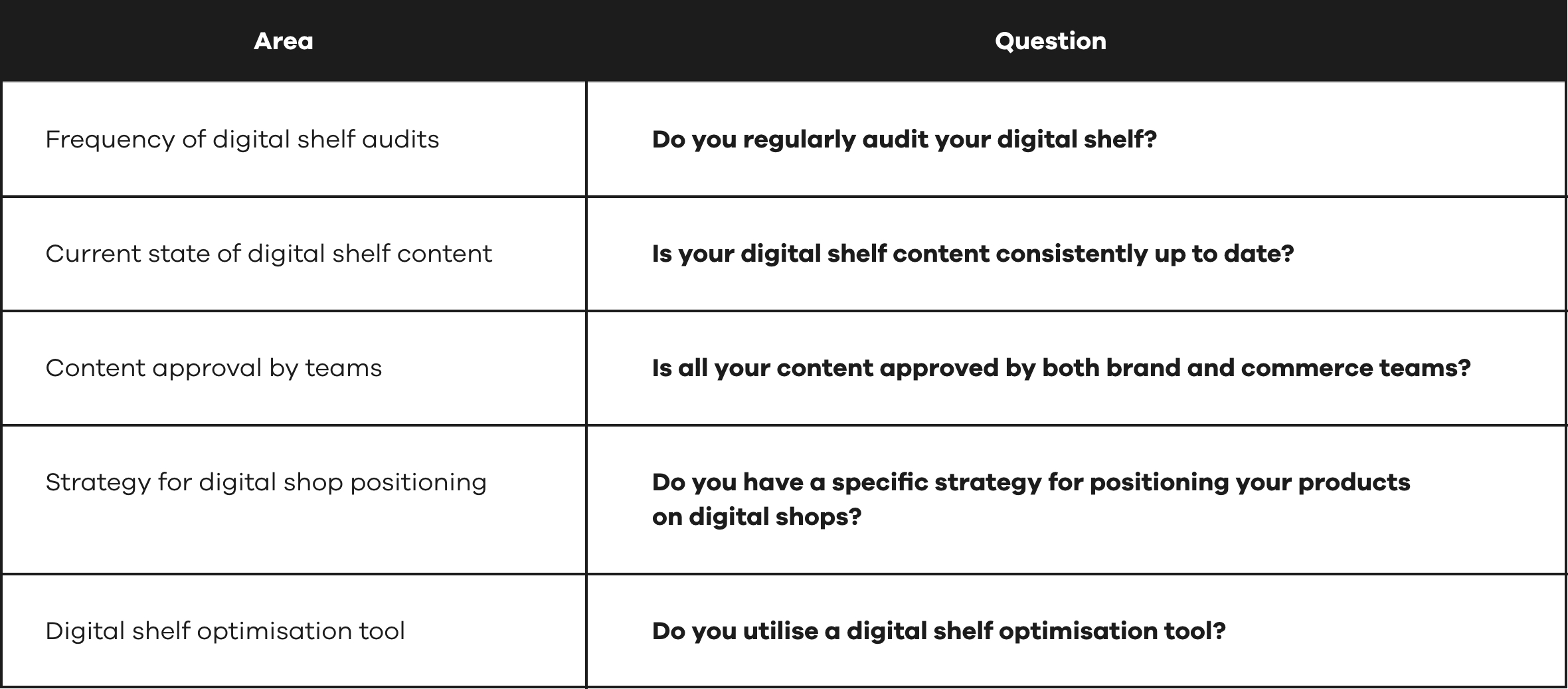

APPEARING
This is about how you show up in the right places for customers
Products: SEO, paid media
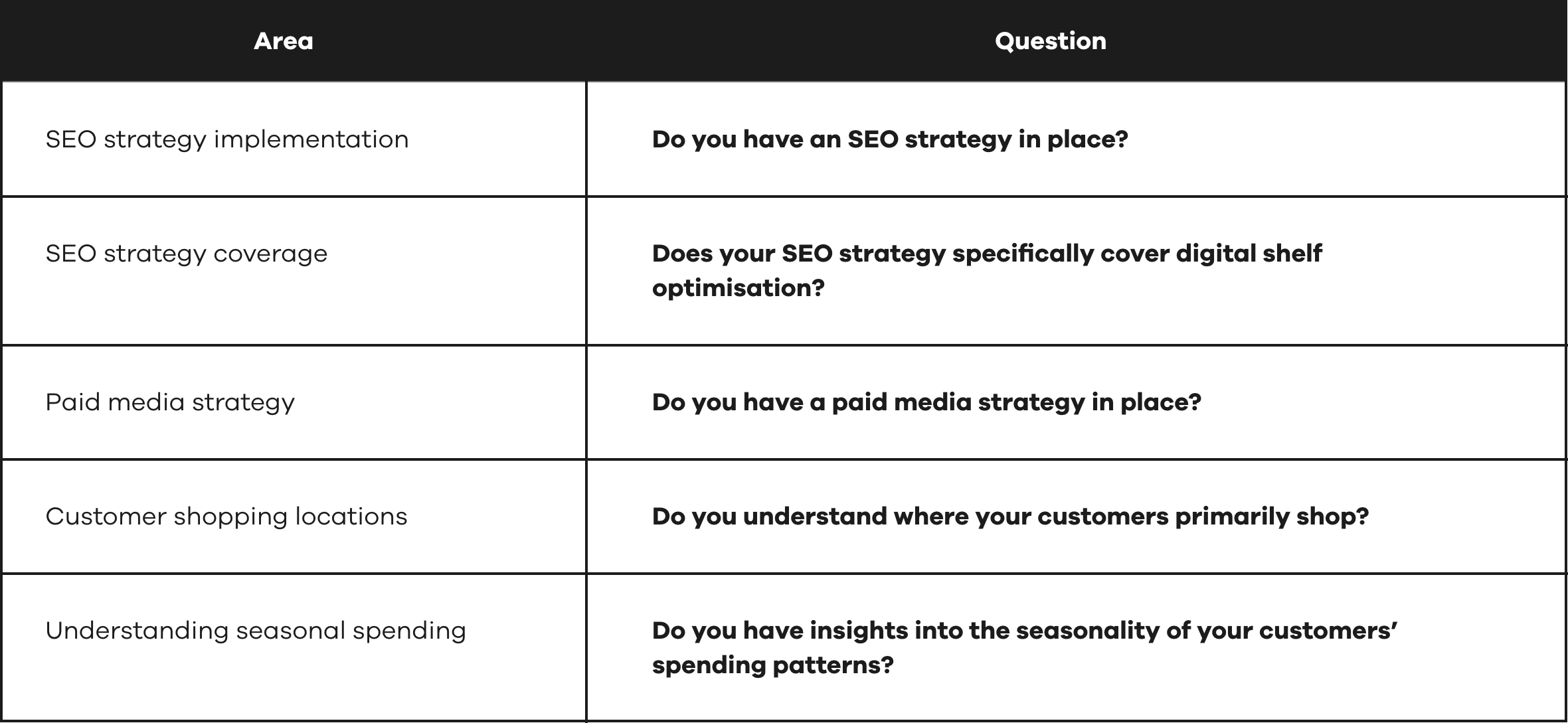

CARING
This is about how you support customers in meaningful ways and build retention
Products: self-serve experience design, customer care training
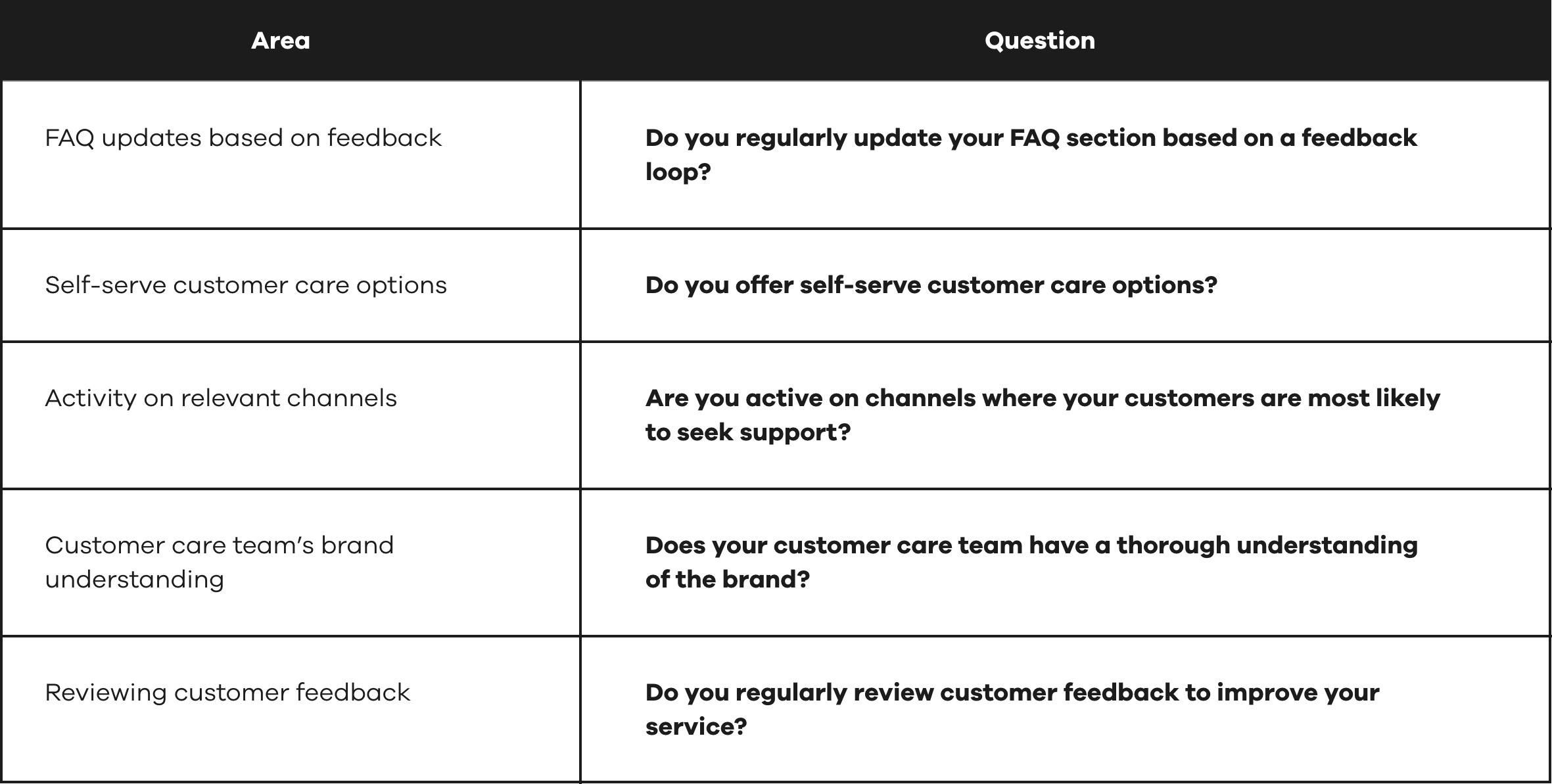

OPTIMISING
This is about how you build a learning engine for continuous growth
Products: test-and-learn, meaningful metrics
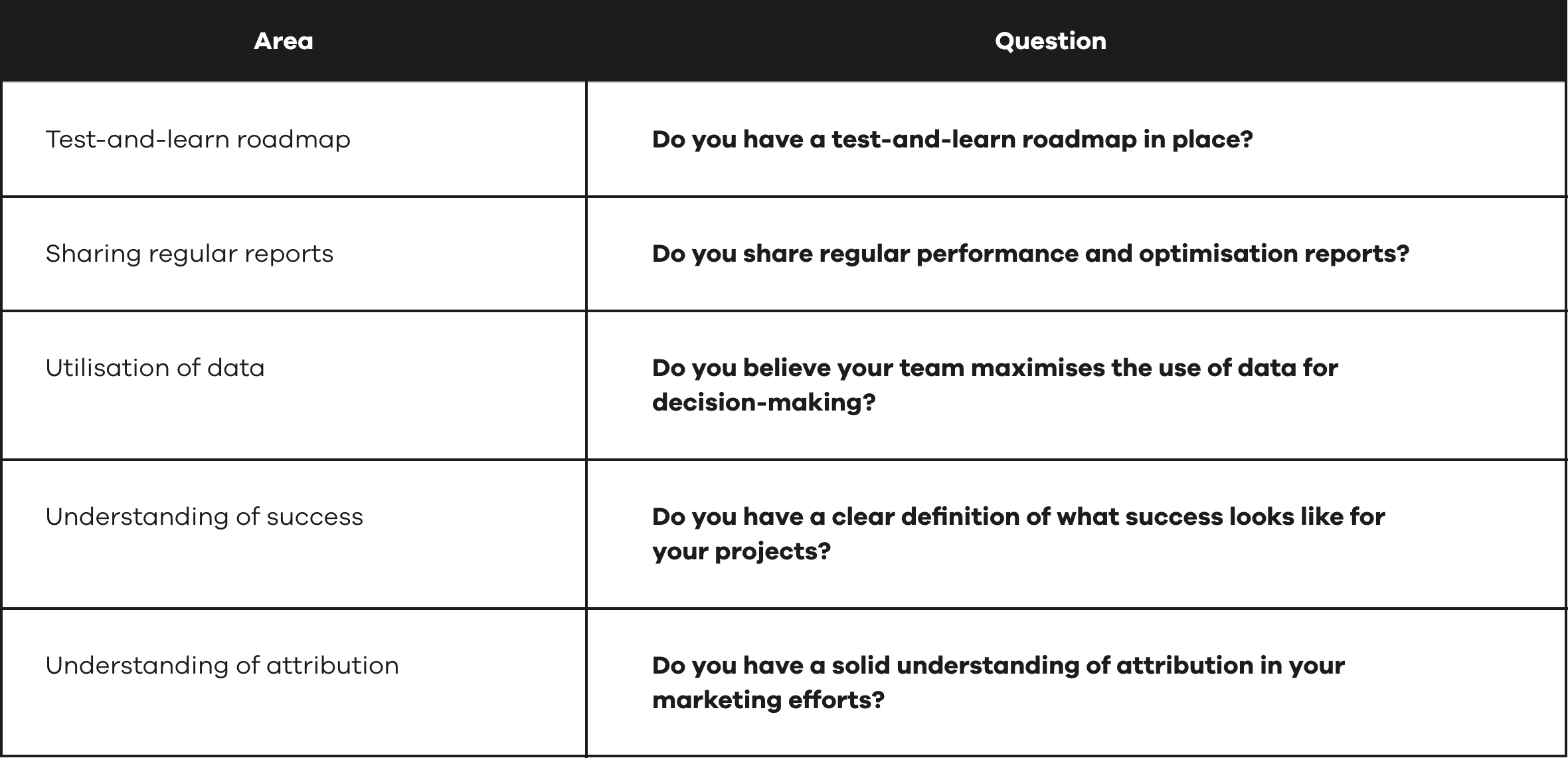

CONNECTING
This is how you create experiences that connect through meaningful personalisation and stories
Products: content strategy, personalisation review
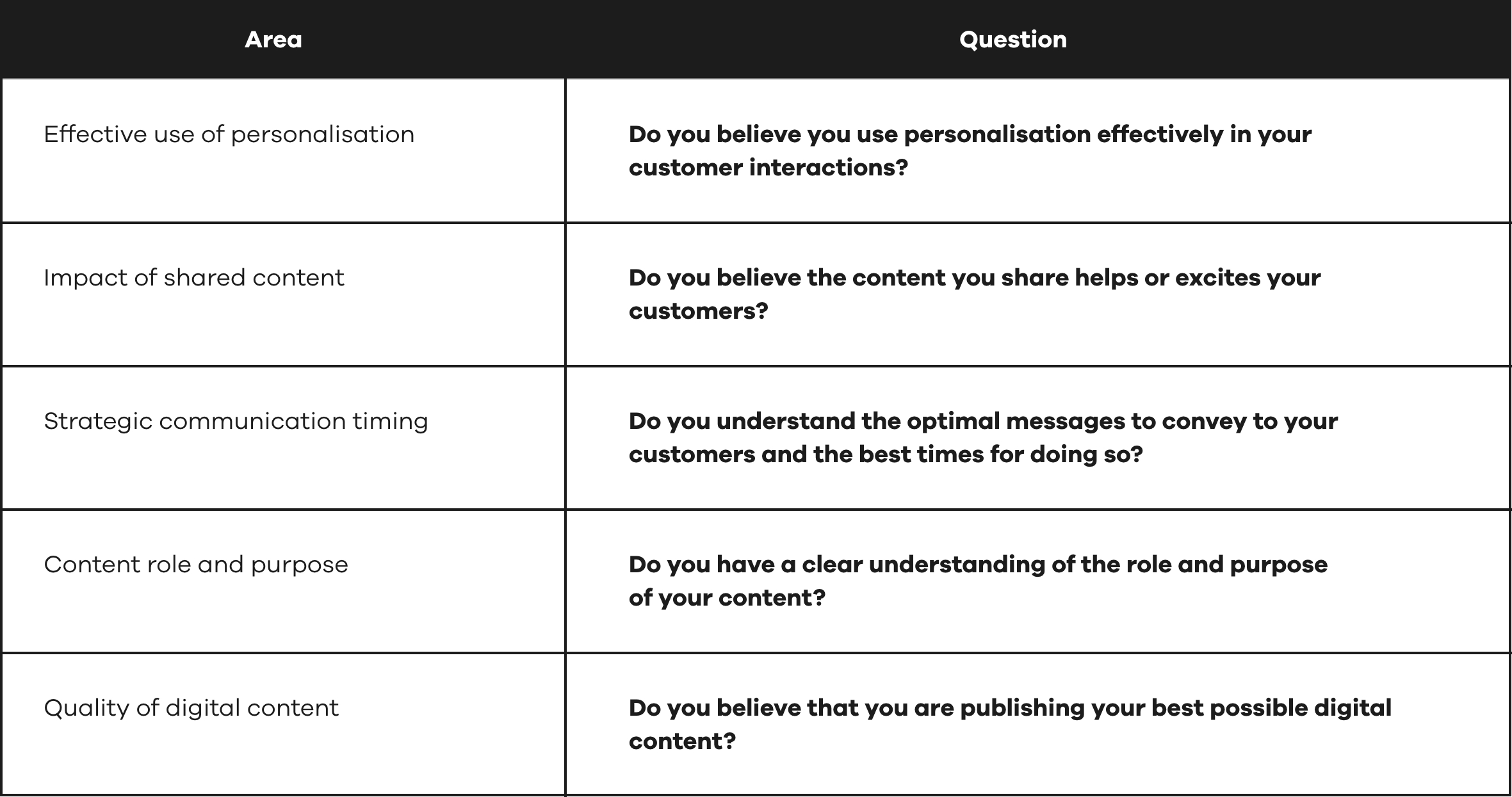

Download this report as a PDF.
DOWNLOAD REPORTCHAT TO US
Have a customer experience challenge you’d like to discuss?
Contact Sam Bettis, Customer Engagement Director
sam.bettis@krowgroup.com

RELATED ARTICLES

Putting 'purchase to delivery' in the hot seat
By understanding the customer journey, we created a roadmap for growth.
Read more

BUILDING BRAND ADVOCACY FOR DFS
By understanding the ‘purchase to delivery’ journey, we created a roadmap for growth.
Read more

Stimulating the UK coffee market
Making Löfbergs stand out – using original insights and a burst of creative Swedish energy.
Read more

